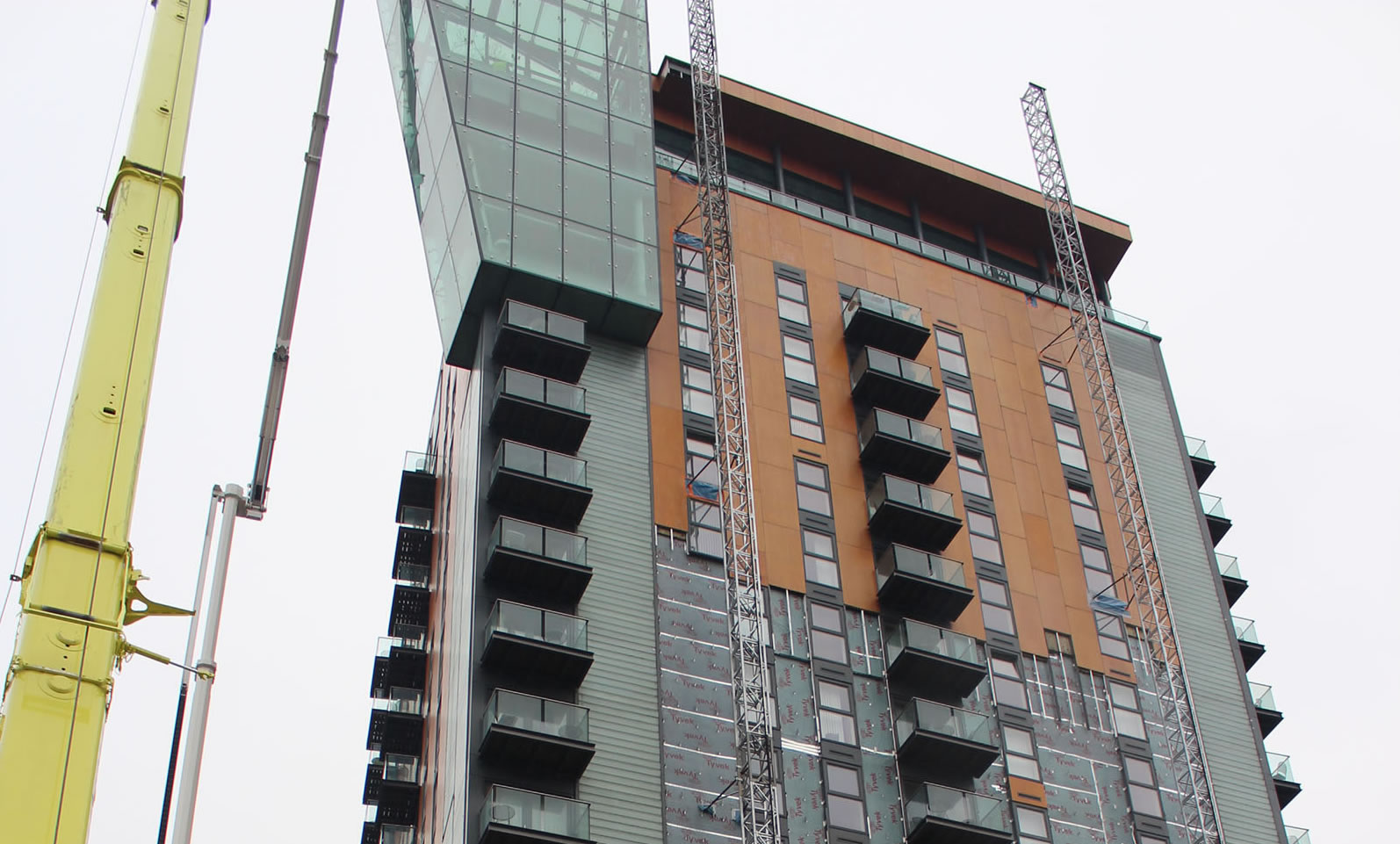Getting cladding right is a life-safety issue, and in the regulatory context of 2025, it’s also a law-related matter. Since the formal launch of the UK’s Cladding Safety Scheme (CSS) in July 2023, government funding has been specifically directed towards addressing life-safety fire hazard risks for residences over 11m tall in England. It follows the impact of the Grenfell Tower tragedy, a residential fire that claimed the lives of 72 people. Following a thorough investigation, it was determined that the spread of an electrical fire was significantly exacerbated by flammable exterior cladding on the building.
The CSS is one of five remediation programmes brought under a single portfolio by the Department for Levelling Up and DLUHC, and it forms part of the government’s wider effort to address the building safety crisis. Today, Pops Facades will outline the key safety risks with commercial cladding. We’ll also consider how existing regulations and guidance apply, and identify best-practice actions clients can take to create compliant, future-proof facades.
What is the Cladding Safety Scheme?
The UK’s Cladding Safety Scheme (CSS) is a government fund set up to meet the reasonable costs of fixing life-safety fire risks linked to cladding on multi-occupied residential buildings over 11 metres in England. It launched in July 2023, and from 1 September 2025, all new cladding remediation applications must be submitted through this scheme via Homes England’s Building Remediation Hub.
Following a build owner’s application, a Fire Risk Appraisal of External Walls (FRAEW) is arranged, and if the FRAEW indicates work is necessary to reduce risk, the CSS can cover reasonable costs, e.g., removing and replacing unsafe cladding and some essential professional fees. The scheme also expects building owners to have good communication with residents throughout the works. It won’t pay for general maintenance or unrelated fire-safety upgrades, and you’re still expected to recover costs from those responsible where possible.
What are the eligibility criteria for the Cladding Safety Scheme?
To qualify for the CSS, the applicant must be the ‘responsible entity’ for the building’s external repairs (for example, a freeholder, RMC or housing provider), and the building must have cladding as defined in PAS 9980. A Fire Risk Appraisal of External Walls (FRAEW), conducted in accordance with the PAS 9980:2022 method by a panel assessor, must demonstrate that risk-reducing works are necessary. The scheme then considers funding the reasonable costs of those works. Buildings where main works commenced before 10 January 2022 are not eligible. If the original developer has signed a government remediation contract and is responsible for rectifying the building, the CSS will not fund it.
How can one apply for the Cladding Safety Scheme?
Start on the Homes England Building Remediation Hub and create an account (or sign in). The Hub is the only place to make a CSS application. You’ll register the building, confirm who the Responsible Entity is (or upload proof you’re acting for them), and give basic details about the block.
Gather what the Hub asks for up front:
- building information
- Responsible Entity and contact details
- evidence you’re authorised to apply (if you’re an agent)
- proof you’ve informed residents/leaseholders
- details of other funding you’ve pursued
- the bank account that will receive any grant payments
Then arrange a Fire Risk Appraisal of External Walls (FRAEW) to PAS 9980:2022 using a firm from Homes England’s assessor panel.
What are the benefits provided by the scheme?
The CSS provides building owners with a means to address fire-safety risks in the cladding of residential buildings without incurring the full cost themselves. It means that leaseholders aren’t stuck with huge bills for removing or replacing dangerous cladding when it wasn’t their fault (or the original building owner cannot be identified). The scheme also covers many of the professional, legal, assessment, and construction costs required to carry out the remediation works, thereby reducing the financial burden. Another benefit of the CSS is that it forces consistent communication with residents. The people applying for the funds are required to keep leaseholders and other residents informed about what’s happening in their building, so no one is left in the dark.
Do you need cladding installation and replacement?
If you’re a building owner looking to replace and install cladding, let us handle every step of the process. We can act as your main contractor. By managing all site logistics, Pops Facades can provide scaffolding, cranes, lifts and qualified labour, and coordinate our works to minimise disruption to occupants. Get in touch, and we’ll show you how we can safely replace or install your cladding.
